Why Persian Rugs?
Understandably, a question that comes up a lot is why Persian rugs. Why do some cost more than others? What is the difference between the expensive choices and a Persian-style rug in IKEA? Is it a good investment? Is it worth buying a Persian rug? Where we can find genuine Persian carpets? Why Persian Rugs?
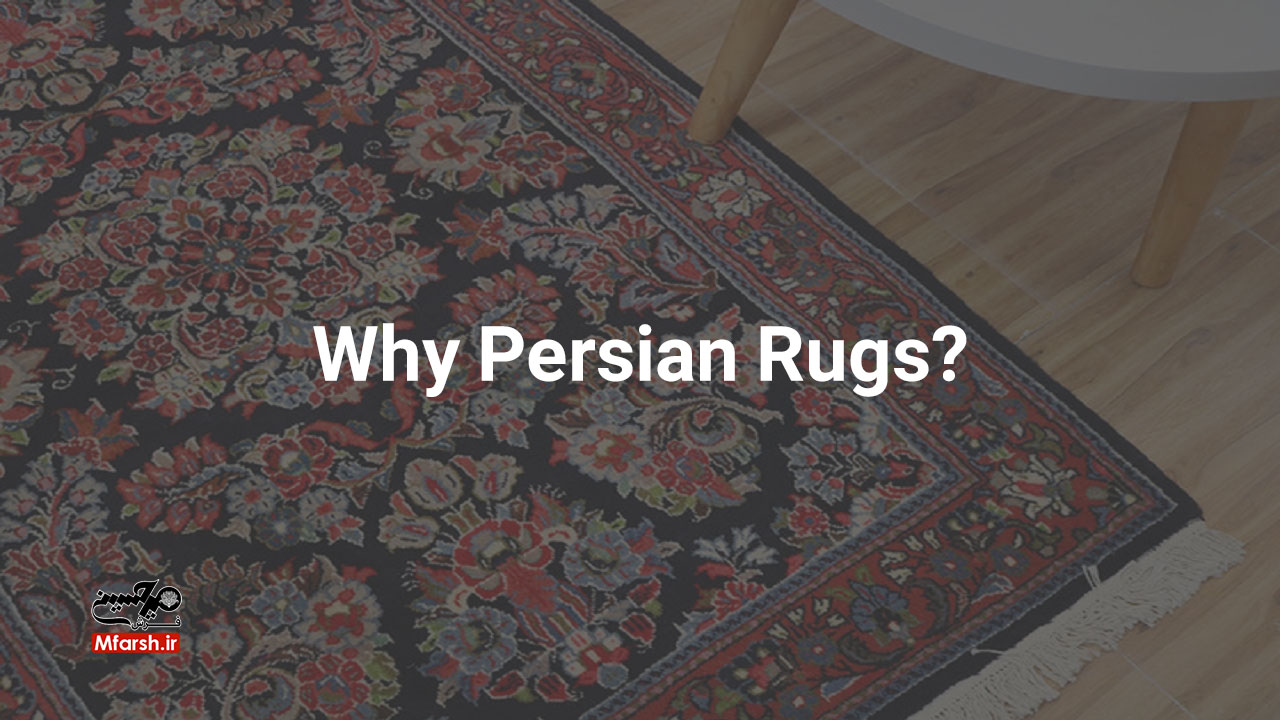
Say the words “Persian rug” to almost anyone and they’ll tell you it is a beautiful object, a treasure, a handmade piece of art, and so much more. Yet, ask someone how you can identify an authentic Persian rug from a fake, and most won’t have a lot to say. This is because it is not an easy thing to do, and it is why we are going to answer a few simple-to-use questions to begin to suss out whether or not a rug is authentic or as it claims.
Why are Persian rugs so special?
Because of their painstaking craftsmanship, Persian rugs are also highly regarded for their quality and durability. With the proper attention and care, they’ll be enjoyed for generations. These pieces are also great investments, often increasing in worth if properly maintained.
Are Persian rugs a good investment?
Persian rugs can be good investments if you make the right choices. Those who own an antique Persian rug passed on from previous generations will vouch for its durability. While Oriental rug antique collectors will tell you, that a diligently chosen Persian rug is unlikely to decrease in value
Who makes the best rugs in the world?
Iran! There’s a reason the word “Persian” is synonymous with the word “rug.” Iran has been one of the highest-quality rug producers for centuries. This heritage is due to its superior knot style and value.
Is it worth buying a Persian rug?
Their dense fibers stay warm. If your feet get cold when they step on cold floors, a hand-knotted wool rug is a perfect solution. The fibers also trap the vibrations of sound from reverberating off walls and hard floors. Persian rugs are the ultimate in high-quality comfort without compromising style.
How much are Persian rugs worth?
The prices can vary, depending on quality, size, materials, designs, and so on, from less than $100 for a 2-by-3-foot accent rug to hundreds of thousands for the best antiques. “An area rug, 8-by-10, a new one, will average $1000 to $2,500, and go up to $20,000,”. “For $1,500 to $2,000, you get a very good-looking rug that lasts forever.”
Why is it called a Persian rug?
Persian rugs also are Oriental rugs but they are made only in Iran (formerly known as Persia). Characteristics of a Persian rug include a soft thin pile (up knots per square centimeter), extremely rich color combinations and unique designs, and a very distinct knot.
For Example, Nain rugs (also known as Naein rugs), are some of the most famous rugs from Iran. These Persian rugs come from a major rug-weaving center of Nain, Isfahan, and often have oversized geometric medallions.
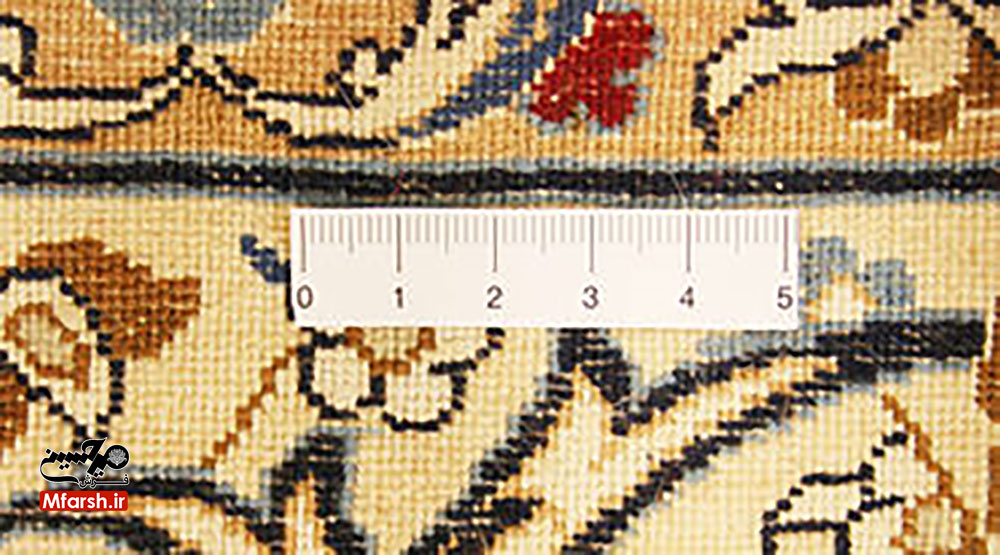
How to identify carpet density
How many knots should be in a Persian rug?
Most carpets are described in terms of knots per square meter. You’ll find Persian rugs from Nain, 6 m2 at 2000 knots (very fine) to Nain 6 m2 at 1200 knots (coarse), and Ardakan Carpets from 600 to 1000 knots per square meter in the same dimensions.
How long do Persian rugs last?
30 to 300 years!
Depending on the level of traffic, quality of the rug, and the level of care it receives your rug could last anywhere from 20 to 200 years. Rugs held by collectors and sold for hundreds of thousands or millions can often be several centuries old.
The Pazyryk rug is one of the oldest Persian carpets in the world, dating around the 4th–3rd centuries BC.
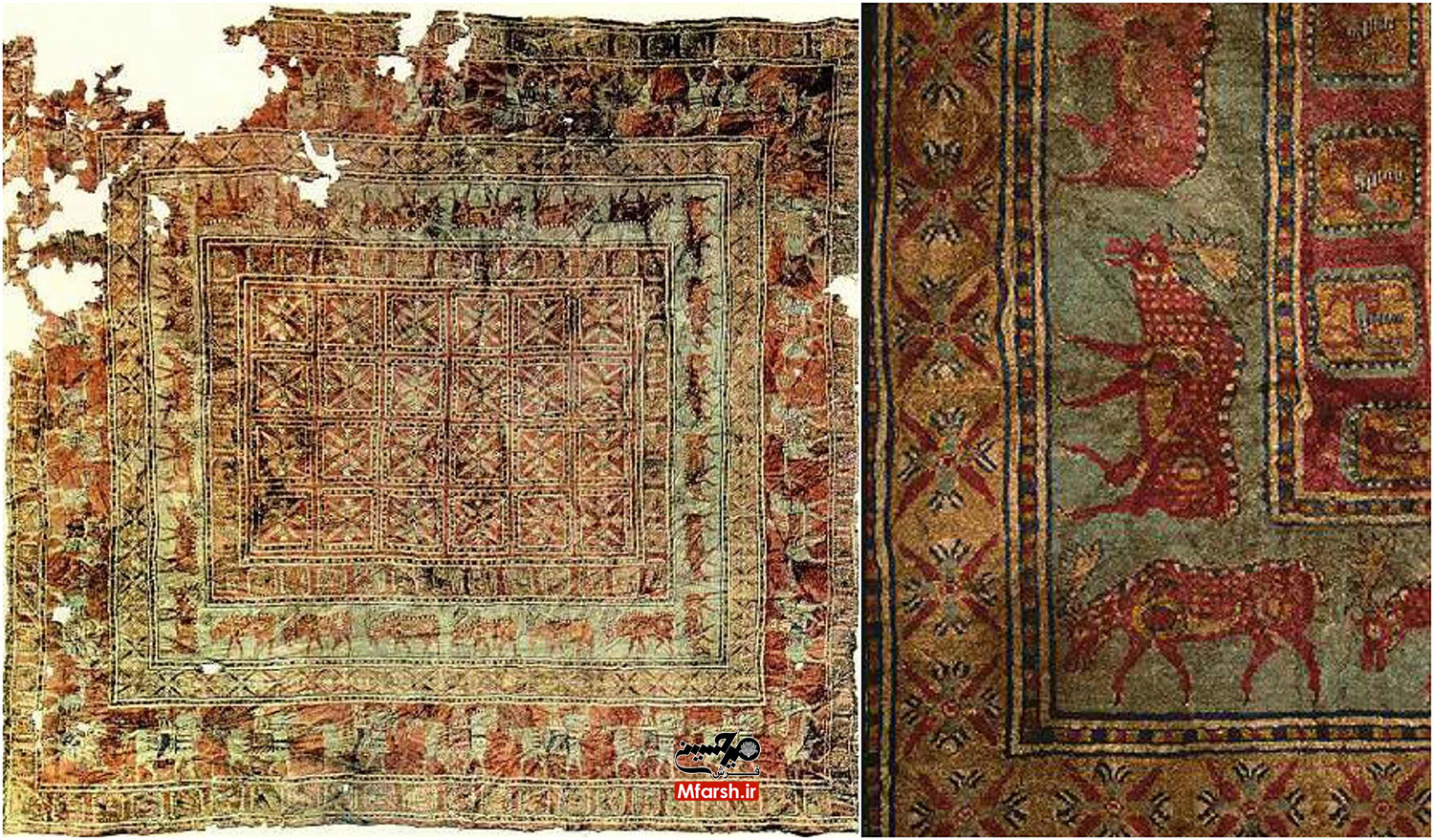
Pazyryk rug. Circa 400 BC. Hermitage Museum
How can you tell an authentic Persian rug?
Do Persian rug’s color fade?
In common, Over time – and with repeated exposure – you’re oriental rug’s color will fade due to the harmful UV rays. As we enter the spring and summer seasons, it’s always a great feeling to open the blinds and let a bit of light and warmth into your home.
However, it’s important to be careful which blinds you’re opening, because if you have an oriental rug in that particular room or hallway, then you may want to reconsider letting in the light (cover it or at least move your rug).
Why Persian rugs are so expensive?
The finest of these carpets can take months, and even years to be made. Finer yarns like silk and cotton yields light-weight and intricate designs and takes much longer to weave compared to wool yarns. Hence, the prices of the rugs made from finer yarns are higher than the ones made completely of wool.
Instead, other carpets (Indian, Pakistan, Turkish…) have thicker knots, coarser designs, and poorer quality materials. Generally, elegance, durability, and design are important details in pricing. Be sure to compare the Persian carpet with other carpets by sight and touch when are you buying.
Is a Pakistani, Indian, or Turkish rug a Persian rug?
Some Turkish, Indian, Afghan or Pakistani carpets are inspired by Persian carpets. Persian-inspired curvilinear and/or floral designs are usually styled from old Kashan, Nain, Kirman, Isfahan, Tabriz, Hunting, and Tree of Life designs. Woven with Senneh (Persian) knot. But be aware, that Persian carpets cannot be compared to any other carpet in terms of design, texture, and quality. Even if it has a Persian design!
Are Persian rugs durable?
One of the great characteristics of Persian rugs is how well they are constructed – hand-knotted rugs are of extremely high quality. Not only do they look beautiful, but they are also hard-wearing and durable. With each stand being knotted by hand, the rug can endure high footfall and still remain of good quality.
Why do Persian rugs have a flaw?
How often should Persian rugs be cleaned?
Every Five to Seven years
According to the experts and professionals, you should get your Persian rug and oriental carpet professionally deep cleaned every 5 to 7 years in order to prevent dirt and dust build-up. Get help from an expert for this.
Are Signed Persian rugs more valuable?
Some of the handwoven Persian carpets have a signature, this is a sign of their authenticity. This distinguishes the Iranian carpet from the fake carpets of other countries. Of course, beware of fake signatures! Get help from an expert for identification.
How do you fix a damaged Persian rug?
In case of any damage to the carpet such as tearing, rotting, fraying weft, or other damages, roll the carpet gently and put it in a safe place. Call an expert and don’t try to pull it on the floor or repair it yourself!
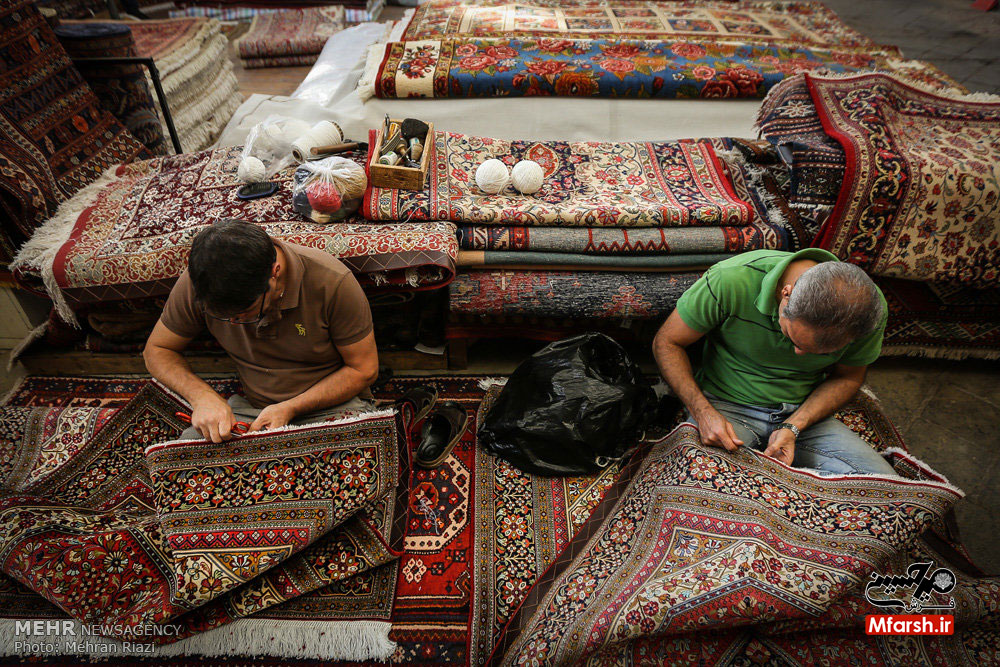
Persian Carpet Darning
Why are most Persian rugs red?
It’s not like that! There is a big variety of Persian carpets. Blue, crimson, creamy white, pink, copper, beige, etc. are only part of the variety of colors. Wool and silks are dyed with natural materials.
Centuries of use of Grape leaves, Pomegranate skin, Walnut skin, Rubia tinctorum, Indigo dye, and Red seed in traditional dyeing, and their combination often produces makes the presence of dominant colors such as blue, red, brown, etc!
Can I bring a Persian rug into the US?
The United States is one of the biggest customers of Persian carpets. U.S sanctions have prohibited the entry of these beautiful carpets. Maybe this decision just is to destroy a thousand-year-old art! It is not clear why cultural products are banned, anyway you have two options. First, choosing the third country to indirect purchase from Iran (or another country). Second, if you can prove they were purchased legally in the U.S.
Contact a U.S. Customs office before including such a rug in your shipment. Always be careful about fake Carpets (like Chinese that are sold as Persian Carpets!). For sure you can get free advice from us!

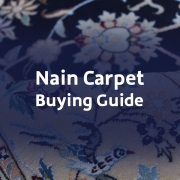


دیدگاه خود را ثبت کنید
تمایل دارید در گفتگوها شرکت کنید؟در گفتگو ها شرکت کنید.